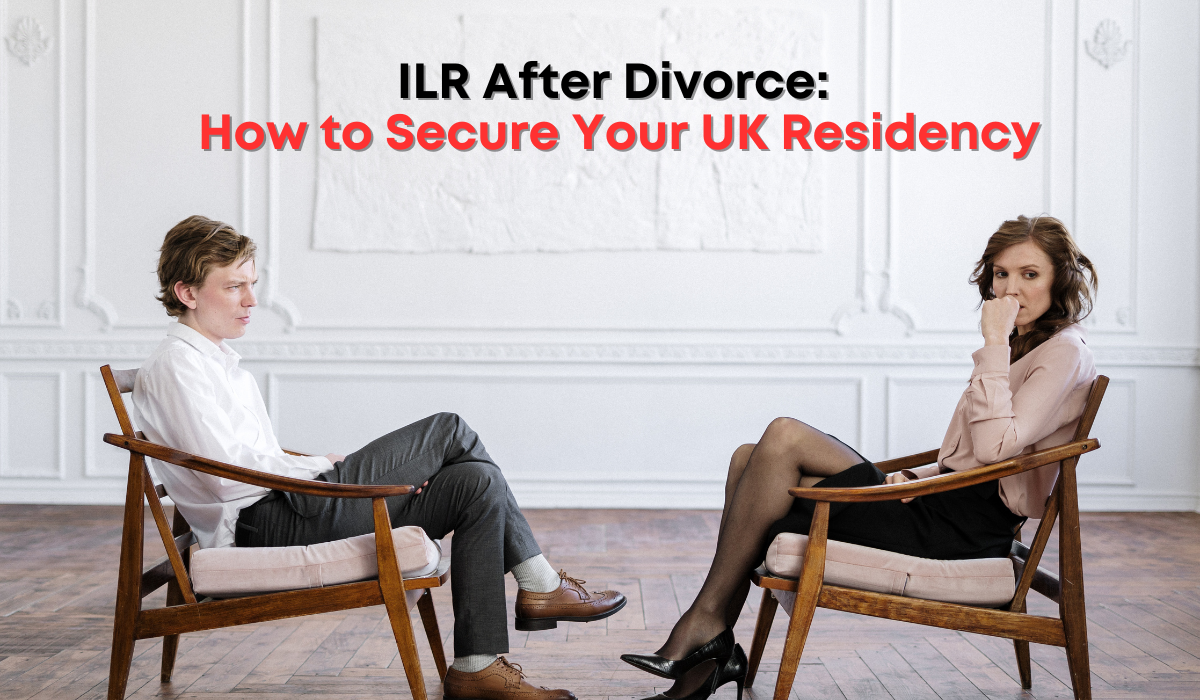Divorce or dissolution of a relationship often marks a challenging chapter in life. For those on the path to Indefinite Leave to Remain (ILR) in the UK, it can add further complexity. Separation may jeopardize settlement plans for individuals on family or dependent visas, as their right to remain is often tied to their partner. However, with careful planning and expert guidance, securing ILR is achievable. Here, we unpack the intricacies of applying for ILR post-divorce and what steps you can take to safeguard your future in the UK.
Understanding Indefinite Leave to Remain (ILR)
ILR grants individuals the right to live permanently in the UK without immigration restrictions. It offers freedom to work, study, and access public services such as the NHS. Most applicants for ILR must have resided in the UK on a qualifying visa for a specific period, often five years. ILR can also serve as a stepping stone to British citizenship, which can be applied for after holding ILR for one year.
Key Terminology in Family Immigration Law
Before delving deeper, let’s clarify some essential terms:
- Sponsor: The UK-based spouse or partner supporting your family visa application.
- Permanent Settlement: Another term for ILR or permanent residency.
- 10-Year Route to ILR: A pathway allowing those with continuous lawful residence in the UK for 10 years to apply for ILR, regardless of visa type.
Eligibility for ILR Post-Divorce
General Requirements
Eligibility for ILR after divorce hinges on the type of visa you hold:
- Independent Visa Holders: If you hold a visa that does not rely on a UK-based partner—such as a Skilled Worker visa—your pathway to ILR remains unaffected by your marital status.
- Dependent Visa Holders: If your visa status is tied to a sponsoring partner, separation or divorce may terminate your right to remain. This is especially relevant for individuals on spouse or partner visas.
To qualify for ILR, you must meet the following criteria:
- Complete the required residency period.
- Pass the Life in the UK test.
- Demonstrate proficiency in English.
Domestic Violence Concession
If your relationship ended due to domestic abuse, the UK’s immigration rules provide special provisions. The Domestic Violence Concession enables victims to apply for ILR without meeting the usual requirements. Evidence such as police reports, medical records, or statements from support organisations can substantiate your claim.
10-Year Long Residence Route
Another viable option for separated individuals is the 10-year long residence route. This applies if you have accumulated 10 years of continuous lawful residence in the UK across various visa types. Even if you switch visas post-divorce, your previous years on a spouse visa can count toward this total.
Separation vs. Divorce in Immigration Law
In immigration terms, both separation and divorce disrupt the eligibility criteria for spouse or dependent visas. Applicants must demonstrate they are in an ongoing and genuine relationship to qualify. Following a separation, you will likely need to switch to a different visa to remain in the UK.
Steps to Apply for ILR Post-Divorce
- Assess Your Current Situation: Determine your current visa status and eligibility for ILR.
- Switch Visa Categories: If necessary, explore alternative visas, such as:
- Skilled Worker visa (employment-based).
- Parent visa (if you have children in the UK).
- Innovator Founder visa (if you’re an entrepreneur).
- Gather Documentation: Collect evidence of residence, financial independence, and eligibility.
- Submit Your Application: Prepare and file your ILR application online, ensuring accuracy and completeness.
- Pay the Fee: Ensure the application fee is paid promptly to avoid delays.
- Await a Decision: Processing times can take up to six months, but delays may occur if additional documentation is requested.
Key Considerations for Financial Independence
Financial independence is critical for some ILR pathways. For instance, applicants on Skilled Worker visas must meet minimum salary thresholds. These requirements vary depending on the occupation and qualifications but generally start at £25,600 annually or £10.10 per hour.
What If Your Application Is Refused?
A refusal doesn’t necessarily mean the end of your journey. You may:
- Appeal the Decision: If you believe the refusal was incorrect.
- Request an Administrative Review: This involves asking the Home Office to reconsider its decision.
- Switch to Another Visa: Transitioning to a new visa category can help you stay in the UK and restart your pathway to ILR.
Special Provisions for Victims of Domestic Abuse
Victims of domestic abuse can apply for ILR under the Domestic Violence Concession. This pathway requires robust evidence, such as:
- Police or medical reports.
- Statements from support organisations.
- Legal documents such as restraining orders.
Engaging an experienced immigration solicitor is highly recommended to build a strong case.
Avoiding Common Pitfalls
The most frequent reasons for ILR refusals include:
- Failing to meet residency requirements.
- Insufficient evidence of domestic abuse.
- Excessive absences from the UK.
- Incomplete or inaccurate applications.
- Unmet financial thresholds.
Final Thoughts
Divorce or separation can feel like a daunting obstacle on the path to permanent settlement in the UK. However, with the right guidance, navigating this journey is possible. Whether you’re applying under the Domestic Violence Concession, the 10-year route, or switching to a new visa category, preparation is crucial. Seeking professional advice from a family immigration solicitor can ensure that your application is thorough, accurate, and compelling. With their support, you can focus on building a stable future for yourself and your family in the UK.
Get in touch: For a comprehensive understanding of your options or queries on UK immigration matters, contact GigaLegal Solicitors at 02074067654 or click here to book a no-obligation consultation with an immigration expert.


